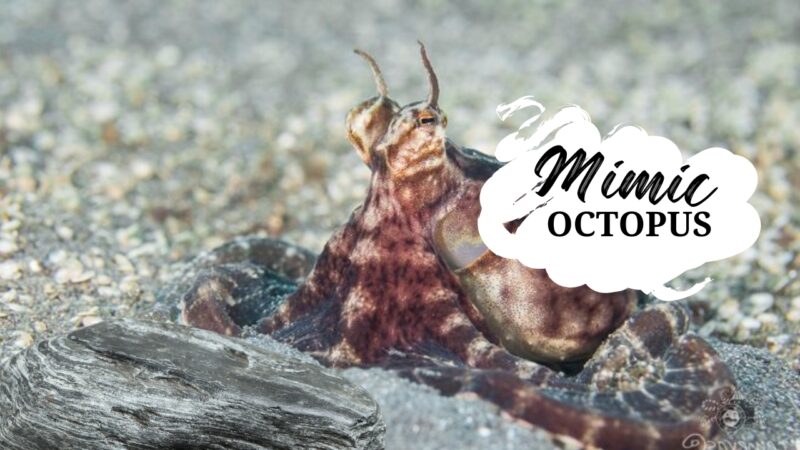Deep within the mysterious depths of the world’s oceans lies an extraordinary creature that has captivated the imagination of scientists and nature enthusiasts alike – the mimic octopus (Thaumoctopus mimicus). Renowned for its uncanny ability to imitate various marine organisms and objects, this elusive cephalopod has earned the title of “nature’s master of disguise.”
Among the many wonders surrounding this remarkable creature, one question has persisted throughout scientific exploration: Is the mimic octopus poisonous? In this educational article, we will embark on a captivating journey into the world of the mimic octopus, diving deep into its intriguing behavior, adaptive camouflage, and the truth behind the speculation surrounding its alleged toxicity.
Meet the Mimic Octopus
The mimic octopus is a species of cephalopod primarily found in the warm waters of the Indo-Pacific region. Growing up to approximately 60 centimeters in length, this fascinating creature possesses a distinct appearance that sets it apart from other octopuses. Its body features a mesmerizing blend of colors, patterns, and textures, allowing it to blend seamlessly into its diverse underwater environments.
A Master of Disguise
Camouflage and Adaptation
The mimic octopus is renowned for its unparalleled talent in camouflage. Unlike most animals that rely on a static color pattern, this cephalopod has an extraordinary ability to alter both the color and texture of its skin, giving it the power to blend seamlessly into its surroundings. By adopting the hues of nearby coral, sand, or seaweed, the mimic octopus becomes nearly invisible to potential predators and prey alike.
For those curious about the intricate details of this cephalopod’s mimicry techniques, [our deep dive into the subject] offers a comprehensive look.
Mimicking Other Species
While camouflage is impressive, the mimic octopus takes the art of deception to an entirely different level. Through a combination of contortions, postures, and subtle skin texture changes, it convincingly mimics a vast array of marine creatures and even non-living objects. From venomous sea snakes to spiky lionfish, flatfish, and even floating flotsam, the mimic octopus showcases an astonishing repertoire of imitations. This mimicry serves multiple purposes, from confusing predators and potential prey to facilitating hunting strategies.
Poison
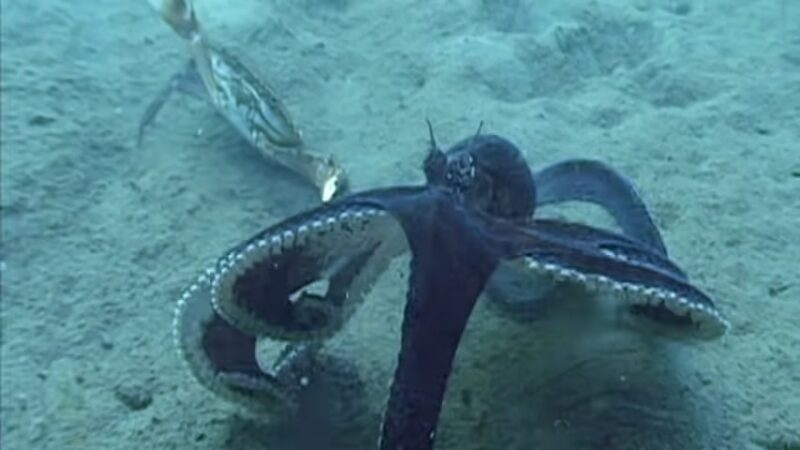
Toxicity
Among the many wonders attributed to the mimic octopus, tales of its alleged toxicity have intrigued researchers and casual observers alike. Early reports and hearsay suggested that this creature might possess venomous properties due to its ability to mimic venomous sea snakes and lionfish with astonishing accuracy. However, recent scientific studies have shed new light on this subject, challenging the notion of its toxicity.
Lack of Venomous Apparatus
A critical piece of evidence in the investigation of the mimic octopus’s toxicity lies in its physical characteristics. True venomous creatures, such as the lionfish or sea snakes it emulates, possess specialized venom glands and delivery mechanisms, such as fangs or spines. However, careful examination of the mimic octopus reveals an absence of these venomous structures. This absence suggests that the mimic octopus relies solely on its physical mimicry to deter predators and does not possess a venomous bite or sting.
Feeding Behavior and Diet
Another key aspect of the mimic octopus’s lifestyle that provides insight into its alleged toxicity is its feeding behavior and diet. Through careful observation of its hunting strategies, researchers have discovered that the mimic octopus primarily preys on small crustaceans, mollusks, and other invertebrates. Unlike venomous predators that immobilize their prey with venom, the mimic octopus relies on stealth and ambush techniques, using its camouflage and mimicry skills to get closer to unsuspecting prey before capturing it with its arms.
Defense Mechanisms
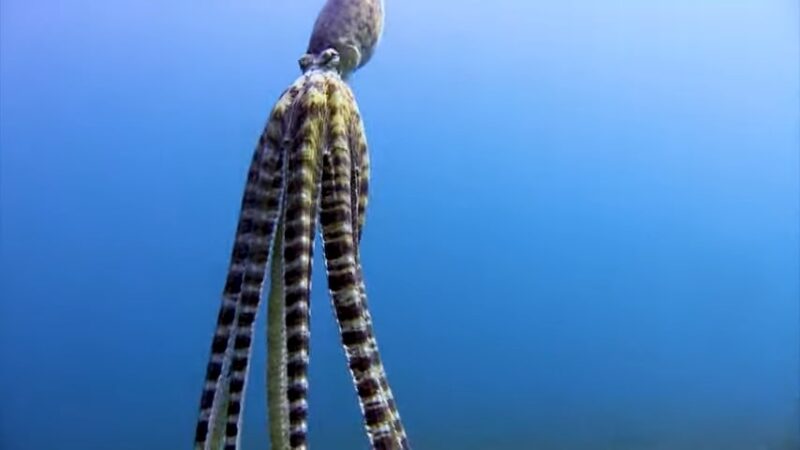
While the mimic octopus has evolved a range of defense mechanisms in the vast oceanic world, other marine creatures, like the tuna, known colloquially as the chicken of the sea, have their own unique adaptations and stories. It’s defense mechanisms to ensure its survival in the vast and often treacherous oceanic world.
Ink Clouds
Like many other octopuses, the mimic octopus possesses the ability to release a cloud of dark ink when threatened. This ink serves as a diversionary tactic, momentarily confusing potential predators and allowing the mimic octopus to escape to safety.
Jet Propulsion
In addition to its camouflage and mimicry, the mimic octopus is an agile swimmer, capable of jetting through the water at impressive speeds. This jet propulsion enables it to make quick escapes from predators when its other defensive strategies are insufficient.
The Evolutionary Advantage of Mimicry
Predator Avoidance
The mimic octopus’s remarkable mimicry abilities offer it a significant advantage when it comes to evading predators. By imitating venomous and dangerous animals, it creates confusion and hesitation among potential threats, effectively increasing its chances of survival.
Improved Hunting Efficiency
Mimicry also plays a crucial role in the mimic octopus’s hunting strategies. By expertly mimicking various creatures, it can approach its prey more closely without triggering a defensive response. This proximity enhances its hunting success and increases its chances of securing a meal.
Conservation Status and Threats
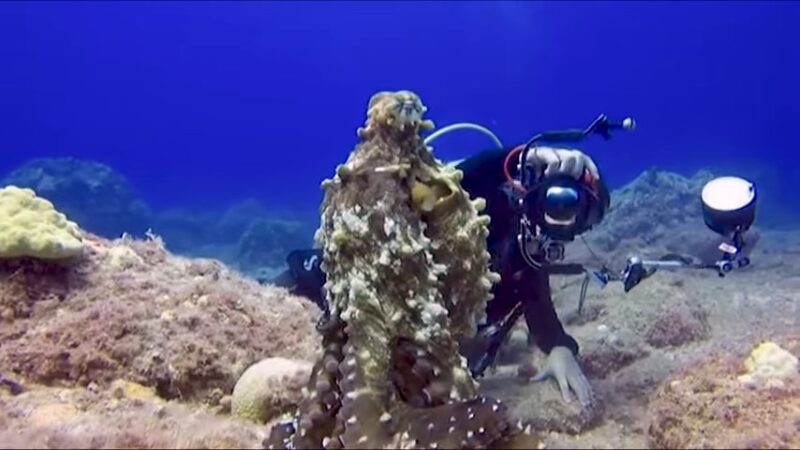
Habitat Destruction
As with many marine species, the mimic octopus faces threats from human-induced habitat destruction. Activities such as coastal development, pollution, and climate change contribute to the degradation of essential underwater habitats. These threats place the survival of the mimic octopus and other marine creatures in jeopardy.
Sustainable Fishing Practices
To safeguard the survival of the mimic octopus and its diverse underwater ecosystem, it is imperative to adopt sustainable fishing practices. Reducing destructive fishing methods, implementing marine protected areas, and promoting responsible fishing practices are essential steps in preserving the delicate balance of marine biodiversity.
FAQs
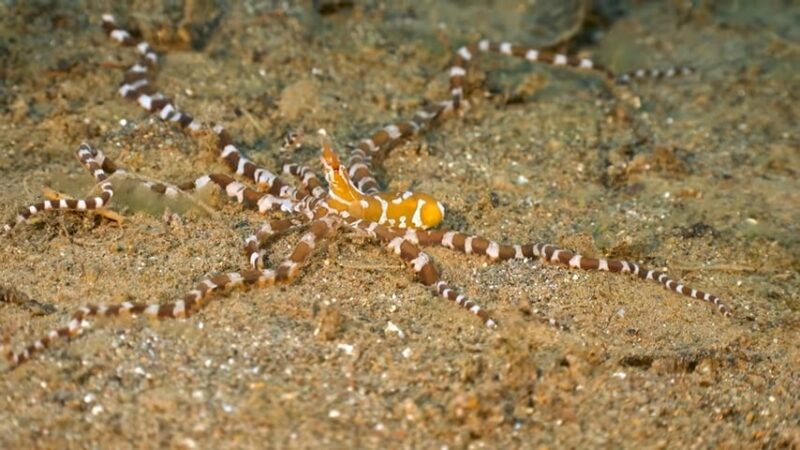
Why does the mimic octopus mimic other animals?
The mimic octopus mimics other animals as a form of defense and hunting strategy. By imitating venomous or dangerous creatures, it creates confusion among potential predators, discouraging them from attacking. Additionally, its mimicry allows the mimic octopus to get closer to unsuspecting prey, increasing its hunting efficiency.
What is the difference between mimicry and camouflage in the mimic octopus?
Camouflage in the mimic octopus involves altering its skin color and texture to blend into its surroundings, making it nearly invisible to predators and prey. On the other hand, mimicry goes beyond camouflage, as the mimic octopus can imitate the appearance and movements of various marine organisms, from venomous sea snakes to lionfish, to gain a survival advantage.
How does the mimic octopus defend itself without venom?
While lacking venom, the mimic octopus employs several effective defense mechanisms. When threatened, it can release a cloud of dark ink to confuse predators, allowing it to escape. Additionally, its jet propulsion enables swift swimming to evade danger.
Does the mimic octopus use mimicry for hunting purposes?
Yes, the mimic octopus utilizes mimicry as part of its hunting strategy. By mimicking other animals, it can approach prey more closely without triggering a defensive response. This deceptive tactic enhances its hunting success, allowing it to capture unsuspecting invertebrates with its arms.
How can we protect the mimic octopus and its habitat?
Protecting the mimic octopus and its habitat requires a collective effort. Implementing sustainable fishing practices, reducing coastal development, and curbing pollution are crucial steps to preserve marine ecosystems. Establishing marine protected areas can offer a safe haven for these remarkable creatures and the diverse marine life that thrives alongside them.
Conclusion
In conclusion, the mimic octopus is not poisonous, despite the early myths and speculations surrounding its toxicity. Its remarkable mimicry abilities, coupled with an array of effective defense mechanisms, ensure its survival in the intricate web of marine life.
As we continue to explore and protect the mimic octopus and its habitat, we gain valuable insights into the wonders of the natural world and the awe-inspiring ways in which organisms adapt and thrive in their respective environments.
The mimic octopus stands as a testament to the extraordinary diversity of life beneath the waves and serves as a reminder of the importance of preserving and cherishing these unique creatures for generations to come.
